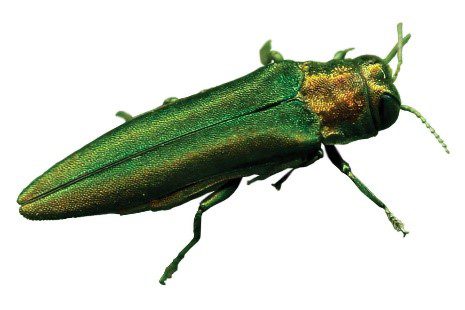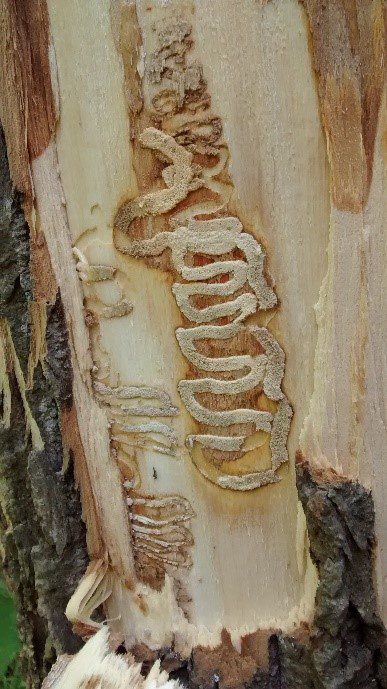Emerald ash borer (EAB) is one of the most destructive tree pests in the United States in the last several decades. While it was first observed in Michigan around 2002, it did not find its way to Texas until 2016. It was first observed in eastern Texas, in Harrison County near the Louisiana border. As of June 2022, EAB has now positively been identified in Dallas and (7) additional Texas counties, since being first observed in Texas. These include Bowie, Cass, Denton, Marion, Parker, Tarrant, and Wise counties as well. The Texas A&M Forest Service (TFS) began placing insect traps around the state and monitoring for EAB in 2012. Undoubtedly EAB will continue to move in and around these known areas and it is possible that new detections will be made in other counties.
Where Does The Beetle Comes From?
The beetle (Agrilus planipennis), referred to in the industry as EAB, is native to Asia. It was imported into the United States, unknowingly, in 2002 on packaging materials from China. The metallic emerald, green insect, which is actually quite pretty, is only about a 1/2″ long. The adults are most often seen in late spring and early summer, but it is the larval stage that does the damage. They burrow into the trunk of ash trees and feed under the bark, leaving “S”-shape trails called galleries. The loss or damage of the phloem inhibits the ability of the infested tree to carry water and nutrients between its roots and its leaves.


A close-up of a EAB (left) and an image (right) of two EAB adults on a U.S. penny for size reference. The typical “D-shaped” exit holes can also be seen on the ash.
Ash Trees Are In Danger From EAB
Ash trees are one of the most abundant tree species in the U.S., numbering around 7-9 million, with tree populations most dense in northern regions. EAB has killed 40 million trees in Michigan alone, and the spreading of the beetle has not stopped. Currently, the beetle has been found in 31 states along with parts of Canada; with Texas being added to the list in 2016. In fact, according to a recent Dallas Morning News article from June 17, 2022, approximately 13%, or almost 2 million, of Dallas’ estimated 14.7 million trees are at risk.
Signs And Symptoms Of The EAB Pest
All of the 16 different Ash species in the United States are susceptible to EAB. Texas has seven species that can be found planted throughout neighborhoods and growing naturally in riparian areas, especially within the Trinity Forest in south Dallas. Interestingly, EAB also attacks white fringe tree, Chionanthus virginicus. Therefore, it is important to know what to look for.
Signs and symptoms of the pest being present include:
- Thinning or dying of tree crowns
- Suckers at the base of the tree
- D-shaped exit holes (where the adult beetles emerge)
- Splitting trunks
- Heavy woodpecker activity

Typical galleries of EAB under the bark of an ash tree.

Example of the D-shaped exit hole of EAB.
While most native insect pests and other pathogens typically don’t cause wide-spread damage, because EAB is an exotic species, it benefits from the lack of native predators that would otherwise help control its population growth. Unfortunately, it also doesn’t matter how healthy your ash tree is – EAB will attack both healthy and stressed trees. Once a tree is infested with Emerald Ash Borer, it typically takes 2-3 years for the tree to die.
TreeTech – the Technical Tree Care Your Trees Deserve!
There are treatment plans, but their effectiveness become limited once the tree is in serious decline from infestation. Typically, that means a tree that has at least 2/3 of its canopy still intact. Once a tree loses more than a third of its canopy recovery is less likely.
Removal of weak, susceptible trees can help slow the spread of this destructive beetle, as well as planting new trees that are not susceptible. If you live in Tarrant, Dallas, or Collin County and have ash trees on your property or, if you suspect a tree is in trouble, call TreeTech and one of our expert arborists can visit your property to provide management recommendations.
Recent Comments